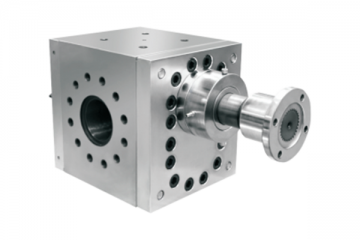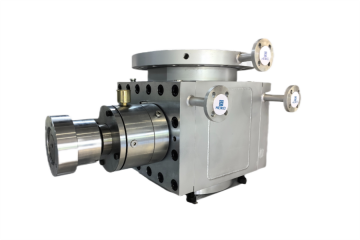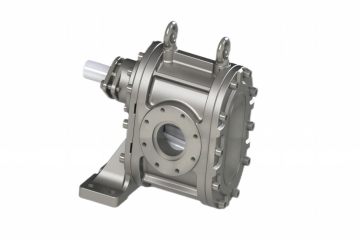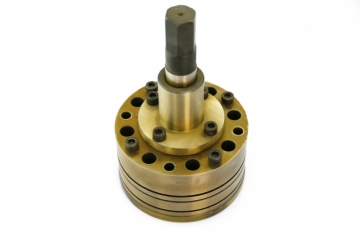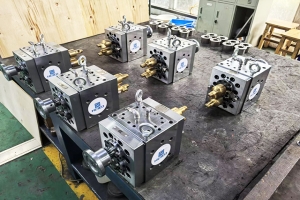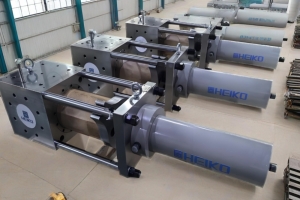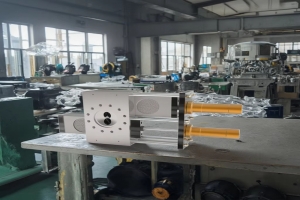The EPE foam tube extruder melt pump is a power unit specifically designed for high-temperature, high-viscosity polymer melts.
Pressure Boosting and Stabilization
Utilizing volumetric changes generated by gear meshing, it elevates the melt pressure output from the extruder to a stable value. This eliminates pressure fluctuations caused by screw pulsation or temperature variations, ensuring dimensional accuracy and surface quality of the foamed tubing.
Precise Metering
The melt pump's flow rate exhibits strict proportionality with rotational speed, enabling linear extrusion characteristics. This allows precise control of melt delivery volume to meet production demands for EPE foam tubes of varying specifications.
Energy Efficiency and Consumption Reduction
By transferring the extruder's pressure reduction function to the melt pump, the extruder operates under low-pressure and low-temperature conditions. This reduces energy consumption and extends equipment lifespan.
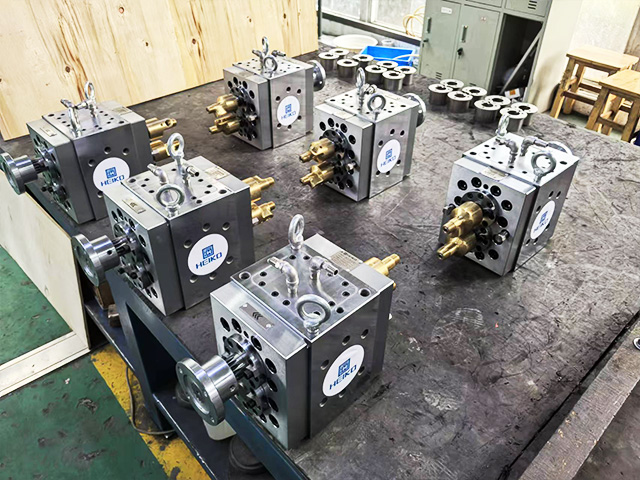
Application Advantages of Melt Pumps in EPE Foam Tube Production
Enhanced Product Quality
Stable Foaming: Eliminates pressure fluctuations to ensure uniform dispersion of foaming agents, preventing surface bubbles or collapses in tubes.
Dimensional Accuracy: Precise melt flow control achieves uniform wall thickness with minimal tolerances, reducing scrap rates.
Surface Quality: A stable extrusion process reduces melt fracture, enhancing the smoothness of the pipe surface.
Enhanced Production Efficiency
High Output: The melt pump enables the extruder to operate at peak efficiency, boosting production by 10%-30%.
Wide Viscosity Adaptability: Capable of handling melts ranging from low viscosity (e.g., PE) to high viscosity (e.g., engineering plastics), meeting the diverse formulation requirements for EPE foam pipes.
Multi-machine Coordination: Supports simultaneous feeding from multiple small-to-medium extruders to a single melt pump, enabling continuous production of large-diameter pipes (e.g., insulated pipes).
Reduced Overall Costs
Energy Optimization: Low-pressure extruder operation reduces power consumption, lowering energy use per kilogram of material by approximately 25%.
Equipment Protection: Reduces screw load on extruders, minimizes wear, and extends service life.
Process Simplification: Installing a melt pump on single- or twin-screw extruders eliminates pelletizing steps, enabling direct pipe extrusion and shortening production cycles.

Technical Parameters and Selection Criteria for Melt Pumps
Key Parameters
Displacement Range: Selected based on EPE foam pipe specifications, with common displacements ranging from 10CC to 500CC/rev.
Temperature Adaptability: Must cover EPE foaming temperatures (typically 150-220°C). Some high-end pump bodies withstand temperatures up to 350°C.
Viscosity Handling Capacity: Suitable for EPE resin viscosity (approx. 1000-5000 Pa·s) to ensure stable delivery.
Material Selection: Pump body constructed from corrosion-resistant alloy steel (e.g., 316L stainless steel). Gears feature hard chrome plating or tungsten carbide coating for enhanced wear resistance.
Selection Recommendations
Small-scale production: Opt for melt pumps with 10-50 cc/rev displacement paired with single-screw extruders for low cost and simplified maintenance.
Large-scale production: Opt for high-displacement pumps (100-300 cc/rev) paired with twin-screw extruders to achieve high-speed, stable extrusion.
Special requirements: For producing ultra-thin-wall tubing or high-expansion ratio products, select high-precision gear pumps (e.g., helical gear design) to minimize shear heat impact on the melt.






